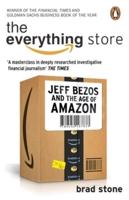Publisher's Synopsis
Tourism studies often deal with complex mixes of external and local factors and the attitudes, perceptions and actions of tourists themselves. In seeking to understand individual elements of this mix, or the results of interactions between them, tourism authorities, managers and researchers often collect quantitative data, but until now the few existing guides to understanding quantitative data have been either very simple or very complicated. This book provides a guide to dealing with real-world data and goes beyond the methods usually covered in introductory textbooks. The first part considers key issues associated with using well known methods to produce valid and reliable models of real-world phenomena, emphasizing issues in data selection, approaches to factor and cluster analysis, and mathematical modelling using regression methods (including logistic regression) and structural equation modelling. The second part covers new approaches to modelling: maximum likelihood estimation, simulation and agent-based modelling. Each chapter includes extensive references to additional reading, and an appendix summarises the software introduced in the book. The book provides many practical examples of applications to tourism research, considers practical issues associated with application of quantitative techniques, and discusses common pitfalls and how to identify and remedy them. The result is a guide to quantitative methods in tourism that de-mystifies both simple and apparently complex techniques and makes them more accessible to tourism researchers.










